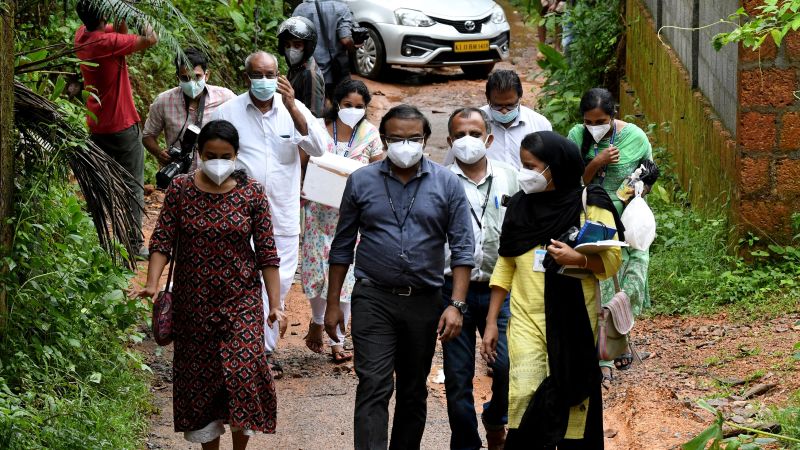A state in southern India is taking measures to contain an outbreak of the Nipah virus after two people died from the rare and often deadly disease, shutting schools and testing hundreds to prevent its spread.
Kerala’s chief minister Pinarayi Vijayan said the virus has been detected in the state’s Kozhikode district, urging residents to exercise caution and follow the health department’s safety guidelines.
Two people have died from the virus, he said in a statement Wednesday, the state’s fourth outbreak since 2018. “We should not be afraid, but face this situation with caution,” Vijayan wrote on social media.
Nipah is a zoonotic virus transmitted from animals to humans, according to the World Health Organization (WHO). However, it can also be transmitted through contaminated food or directly between people.
Symptoms often begin with a headache and drowsiness but quickly transform into a coma within a matter of days, according to the US Centers for Disease Control and Prevention.
It can cause acute respiratory syndrome – where the lungs cannot get enough oxygen to the body – and fatal encephalitis, an inflammation of the brain.



This is the best summary I could come up with:
A state in southern India is taking measures to contain an outbreak of the Nipah virus after two people died from the rare and often deadly disease, shutting schools and testing hundreds to prevent its spread.
Kerala’s chief minister Pinarayi Vijayan said the virus has been detected in the state’s Kozhikode district, urging residents to exercise caution and follow the health department’s safety guidelines.
Symptoms often begin with a headache and drowsiness but quickly transform into a coma within a matter of days, according to the US Centers for Disease Control and Prevention.
So far in Kerala, more than 700 people have been identified as close contacts and are being tested for the virus, the state’s health minister Veena George told reporters on Wednesday.
Kerala experienced a deadly outbreak of the Nipah virus in 2018, killing 17 people and causing widespread panic in the state.
According to the WHO, between 2001 and 2008, around half of reported cases in Bangladesh were due to human-to-human transmission resulting from workers providing care to infected patients.
The original article contains 521 words, the summary contains 173 words. Saved 67%. I’m a bot and I’m open source!